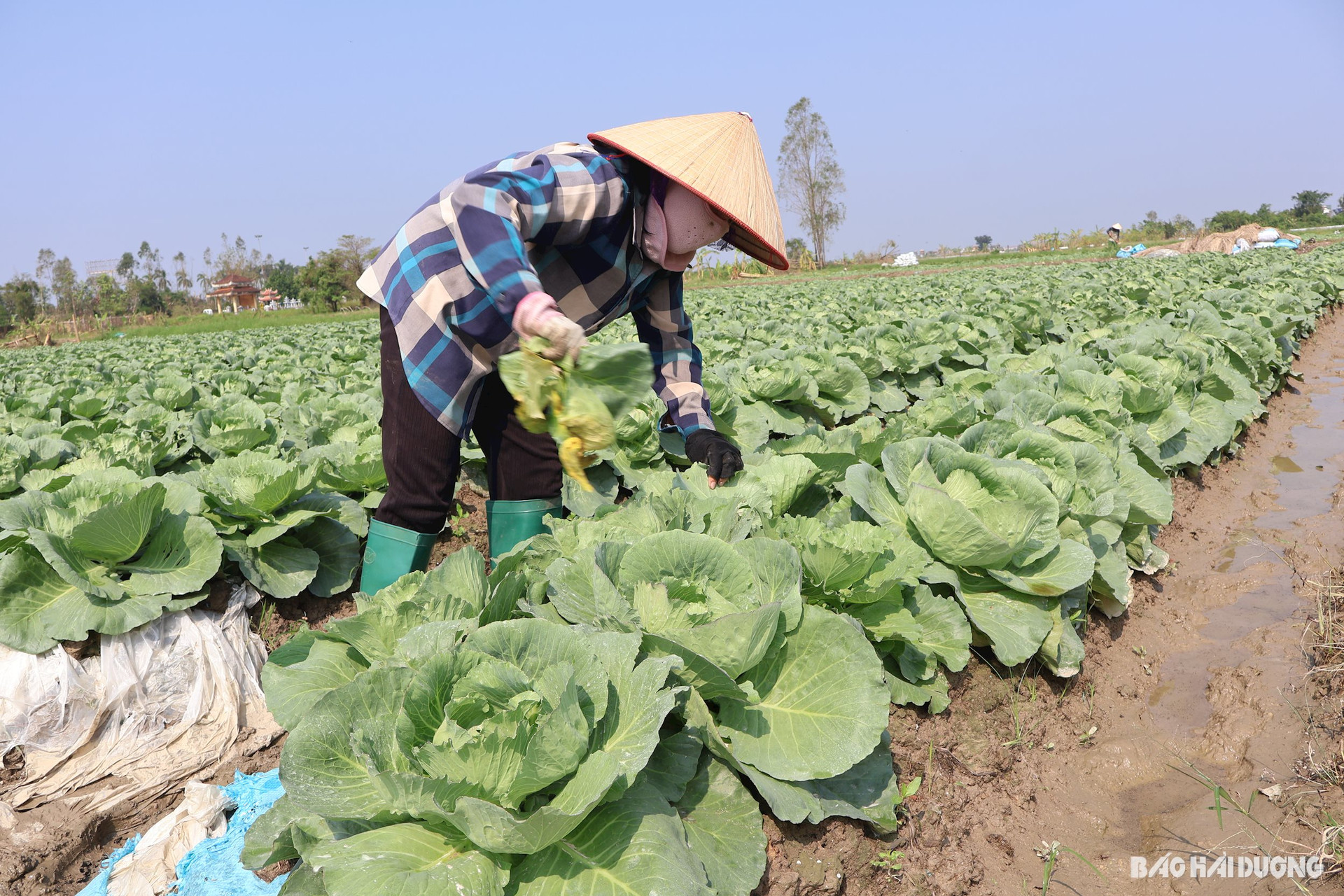
For rice : By September 17, 2024, about 85% of the rice area in
flowering to ripening period; 15% of the rice area is in the stage of panicle initiation to flowering. This is the period when rice plants are very sensitive to external impacts. Therefore, it is necessary to concentrate all resources on pumping and draining water, not allowing prolonged flooding, causing damage, especially in areas that are still deeply flooded and zoning to have remedial measures for each area. Specifically:
- For rice fields that have flowered and fallen over: Need to be erected and tied into clusters (from 3-4 clumps/cluster) to create favorable conditions for the rice to become firm and ripe.
- For rice fields in the milky ripening - waxy ripening stage: Drain the water from the field surface to help the rice ripen quickly, ensuring the soil is dry, favorable for the process of preparing the land for planting early winter crops after harvesting the rice.
- For rice fields that are forming panicles and about to flower: Drain and keep water shallow on the field surface so that the rice can flower and firm up easily. When the weather is clear, spray additional foliar fertilizer containing potassium and trace elements to help the rice plants recover quickly, stand up quickly and promote flowering and firming.
- For rice areas ready for harvest: Focus on harvesting when the rice is ripe according to the motto "green at home is better than ripe in the fields" to free up land for winter crop planting.
- For late-season rice fields that have just started to panicle and are still flooded (mainly yellow sticky rice, spiral sticky rice, tangerine sticky rice, rice replanted after the flooding in early August): Check the growth of the rice. If the stems are still strong and can recover, farmers are advised to remove moss and wash the rice leaves during the withdrawal process.
water.
- Proactively spray pesticides to prevent bacterial leaf blight, bacterial stripe disease, and brown spot disease for areas of green rice that are growing from panicle to flowering, areas of rice that have flowered but are not yet ready for grain, especially areas planted with rice varieties susceptible to diseases such as BC15, Bac Thom No. 7, TBR 225, VNR20... Continue to monitor other pests and diseases such as brown planthoppers, black seed disease, and rice blast disease.
rice blast to prevent it in time when it occurs.
For vegetables and colors: Zone and prioritize quick drainage
flooded vegetable areas.
- For areas that can be restored: Farmers are advised to dredge ditches and drainage ditches in the fields, not to let water stagnate on the bed surface; after the water recedes, it is necessary to clear weeds and clean the fields, specifically:
+ For all kinds of vegetable plants: Collect and prune damaged or broken branches and leaves; prune and replant to ensure density; remove the film covering previously covered vegetable beds and nursery beds to circulate air and get light to help the plants recover quickly. When the surface soil of the bed is dry and dry, lightly stir to break the crust. When the plants recover, apply phosphate fertilizer or organic microbial fertilizer, preparations.
Stimulate the plant to continue growing and developing, produce new roots... When the plant recovers, increase the fertilization with synthetic organic fertilizer, microorganisms at the base and spray on the leaves.
+ For climbing plants such as squash, pumpkin, luffa, cucumber, tomato, beans: mound soil around the base, prune broken tips and damaged leaves, and re-erect the tilted trellis when the plant has recovered.
+ For corn that is lightly fallen and recovers on its own (rises up), there is no need to prop it up; for corn that is heavily fallen or has fallen flat and is still short, it must be proped up immediately while the soil is still moist. When lifting, be gentle to avoid breaking the roots or stems, and add more soil to the base.
+ Due to strong winds and heavy rains that damage leaves, overturn vines, and shake roots, plants are susceptible to diseases such as root rot, root collar rot, anthracnose, wilt, soft rot... Therefore, it is necessary to spray pesticides on vegetable plants early.
- For vegetable areas that are severely affected and cannot recover: Conduct demolition, clean the fields, plow, treat pathogens, prepare the land for early winter crop planting.
For fruit trees and ornamental plants:
- Dig trenches and continue to clear the trenches to drain water as quickly as possible.
- Cut off broken trees, branches, and fruits severely damaged by storms; re-erect tilted or fallen trees that can recover, add soil to the base; actively clean the garden, collect broken branches, leaves, and fruits and destroy them.
- When the soil surface has dried, loosen the crust to make the soil airy; add phosphate fertilizer, organic microbial fertilizer or root stimulants combined with spraying trace elements through the leaves to help the plant continue to grow and develop, and produce new roots.
- Focus on replanting and replacing dead fruit trees that have fallen and cannot be restored, such as papaya, kumquat, guava, etc. For broken banana trees, remove and dig up the roots in the clump to create ventilation for the young banana trees to grow. For banana trees with bunches that have not fallen or broken when the tree is tilted, use a slanting pole to support the bunches.
For greenhouses and net houses: Urgently reinforce and repair lightly damaged areas; clean up previous crop residues, clean the fields, and prepare growing media to continue planting new crops and melons and vegetables.
Source: https://baohaiduong.vn/mot-so-bien-phap-cham-soc-rau-mau-sau-mua-bao-393332.html


![[Photo] Students of Binh Minh Primary School enjoy the full moon festival, receiving the joys of childhood](https://vphoto.vietnam.vn/thumb/1200x675/vietnam/resource/IMAGE/2025/10/3/8cf8abef22fe4471be400a818912cb85)



![[Photo] Prime Minister Pham Minh Chinh chairs meeting to deploy overcoming consequences of storm No. 10](https://vphoto.vietnam.vn/thumb/1200x675/vietnam/resource/IMAGE/2025/10/3/544f420dcc844463898fcbef46247d16)

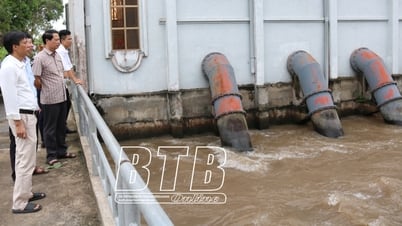
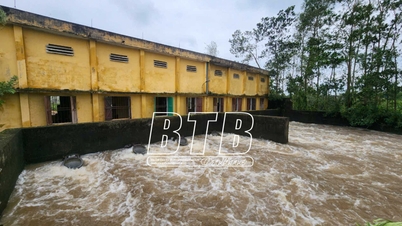













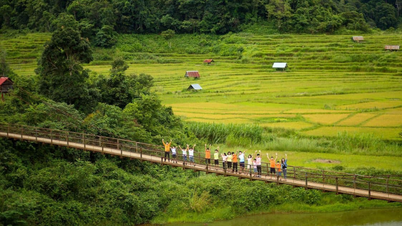
























































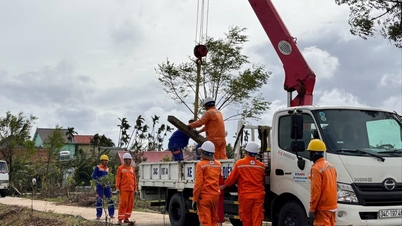


















Comment (0)